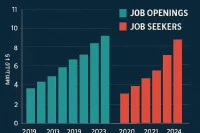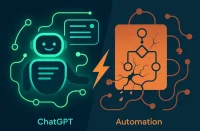In today’s rapidly evolving business landscape, the ability to adapt and pivot isn’t just a competitive advantage—it’s a necessity. Workforce agility the capacity of an organization’s people to respond quickly to change, embrace new roles, and learn continuously—is emerging as a top priority for HR leaders and executives alike. As companies grapple with technological disruption, shifting customer expectations, and economic uncertainty, building flexible teams can mean the difference between thriving and merely surviving.
This article explores what workforce agility entails, why it matters in 2025, and practical strategies for cultivating flexible, resilient teams that can seize opportunity and navigate volatility.
What Is Workforce Agility?
Workforce agility refers to an organization’s ability to rapidly reconfigure people, processes, and structures to meet changing demands. Key characteristics include:
- Role Fluidity: Employees stretch beyond narrow job descriptions to tackle new challenges.
- Continuous Learning: A culture of ongoing skill development and knowledge sharing.
- Decentralized Decision-Making: Leaders empower teams to make timely, on-the-ground choices.
- Cross-Functional Collaboration: Silos break down as experts collaborate across disciplines.
Agile workforces are akin to jazz ensembles: each member masters their instrument but listens closely, adapts riffs, and improvises collectively in real time.
Why Agility Matters Now
1. Accelerating Disruption
Advances in AI, automation, and digital platforms are upending industries at record speed. In banking, robo-advisors and real-time payments require finance teams to learn new tools overnight. In retail, on-demand delivery and virtual storefronts demand swift operational pivots.
2. Talent Market Volatility
Post-pandemic “Great Reshuffle” trends persist. Retention hinges on giving employees autonomy, clear career pathways, and opportunities to broaden their skill sets core tenets of agile workplaces.
3. Project-Based Work
Organizations increasingly adopt project or product-team models versus rigid hierarchies. Agile governance—sprint planning, stand-ups, retrospectives enables faster innovation and continuous improvement.
Pillars of an Agile Workforce
Leadership & Vision
- Strategic Clarity: Leaders must articulate the organization’s North Star—why agility matters to customers and the bottom line.
- Empowerment Ethos: By delegating decision rights, executives remove bottlenecks and unleash team creativity.
- Role Modeling: When leaders learn publicly, share failures, and pivot quickly, teams follow suit.
“Agile isn’t a process—it’s a mindset,” notes McKinsey & Company.
Culture & Mindset
- Psychological Safety: Employees need assurance that experiments—and occasional missteps—won’t be punished.
- Growth Orientation: Emphasizing stretch assignments and “T-shaped” skillsets fosters adaptability.
- Recognition of Agility: Celebrate rapid learning, cross-team collaboration, and creative problem-solving.
Skills & Learning
- Skill Taxonomy: Identify core and emerging competencies (e.g., data literacy, design thinking, change management).
- Micro-Learning: Bite-sized modules (videos, podcasts, virtual labs) let employees upskill on demand.
- Rotations & Shadowing: Short-term assignments across functions build broader context and empathy.
Deloitte research shows that companies with strong learning cultures are three times more likely to be agile.
Structures & Processes
- Cross-Functional Squads: Small, multidisciplinary teams aligned to specific products or outcomes.
- Kanban & Scrum: Visual workflows and time-boxed sprints drive transparency and pace.
- Rapid Feedback Loops: Frequent check-ins and retrospectives let teams refine practices continuously.
Technology & Tools
- Collaboration Platforms: Tools like Slack, Microsoft Teams, and Mural enable real-time coordination across geographies.
- AI-Enhanced Staffing: Intelligent systems that match skills to projects ensure the right people mobilize when needs arise.
- Analytics Dashboards: Real-time metrics on capacity, performance, and engagement guide agile resource allocation.
Steps to Build Flexibility into Your Workforce
- Map Your Capabilities
Conduct a skills inventory to understand current strengths and gaps. Use surveys, self-assessments, and manager input to create a living skills database. - Define Agile Roles
Move beyond rigid job descriptions. Create “capability profiles” that outline core responsibilities + desired stretch skills. Allow employees to claim moonshots aligned to business priorities. - Pilot Agile Teams
Start small—assemble a cross-functional team to tackle a non-mission-critical project. Embed agile coaches to guide ceremonies and capture lessons learned. - Scale Through Communities of Practice
As squads multiply, form guilds or chapters around specialties (e.g., UX, DevOps, data science). These networks share best practices and guardrails. - Embed Continuous Learning
Partner with online providers (LinkedIn Learning, Coursera, Pluralsight) and internal experts to curate role-based learning paths. Recognize completion and real-world application. - Refresh Performance Management
Replace annual reviews with quarterly “make/break” conversations focused on goals, outcomes, and skill growth. Tie rewards to adaptability metrics (e.g., speed to competence in new areas). - Invest in Agile Leadership
Offer rotational leadership programs, immersive workshops, and 360-degree feedback. Leaders who coach and unblock teams versus hoard authority are essential catalysts.
Real-World Example: Acme Financial Services
Acme Financial Services faced stagnation in its risk-modeling team. By piloting an agile “squad” comprised of data scientists, compliance analysts, and software engineers, they:
- Reduced model production time by 40%
- Increased cross-team idea sharing, spawning two new product lines
- Boosted employee engagement scores by 25% within six months
Key factors: co-location (physical or virtual “war rooms”), empowered product owners, and a dedicated scrum master facilitating daily stand-ups.
Ready to Hire Smarter and Faster?
Reach thousands of qualified candidates in minutes. Post your job on WhatJobs and start connecting with top talent today.
Post a Job NowCommon Challenges & How to Overcome Them
- Resistance to Change
Solution: Communicate wins from pilot teams, involve skeptics in rituals, and reassure that agility augments not replaces core roles. - Insufficient Skills
Solution: Create rapid upskilling cohorts, leverage peer-to-peer learning, and offer just-in-time resources during sprints. - Misaligned Incentives
Solution: Tie compensation and recognition to team outcomes (customer satisfaction, cycle time reduction) as well as individual goals. - Tool Overload
Solution: Standardize on a minimal set of platforms; provide clear guidelines on channel use, documentation, and integration.
Measuring Workforce Agility
Key metrics help track progress:
- Time to Deploy: How quickly can you staff a new initiative with qualified people?
- Skill Velocity: Rate at which employees acquire and apply new competencies.
- Cross-Team Mobility: Percentage of staff participating in at least one rotation or squad per year.
- Employee Net Promoter Score (eNPS): Correlates with willingness to embrace change.
- Project Success Rate: Ratio of agile-delivered initiatives hitting scope, budget, and timeline targets.
FAQs
Q: Isn’t agile only for software development?
A: No. Agile principles—transparency, iterative work, customer-centricity—apply equally to marketing campaigns, finance transformations, and HR initiatives.
Q: How large should an agile team be?
A: Optimal size is 5–9 members—enough diversity for collaboration, yet small enough to maintain focus and cohesion.
Q: What roles support agile squads?
A: Common roles include Product Owner (vision), Scrum Master (process), and a rotating Technical Lead or Data Steward. Other specialists embed as needed.
Q: Can a non-tech organization adopt agile?
A: Yes—companies in healthcare, manufacturing, and government are successfully piloting agile in operations, R&D, and customer service.
The Road Ahead
Building truly flexible teams is an ongoing journey, not a one-off project. As market dynamics shift, so too must organizational structures, skill sets, and mindsets. In 2025, workforce agility is the linchpin of resilience empowering companies to innovate faster, respond to disruptions, and attract top talent who crave autonomy and growth.
By embedding agile principles at every level—leadership, culture, processes, and technology—you can transform your workforce into a responsive network of empowered teams, ready to tackle whatever tomorrow brings.
For more insights on building agile organizations and flexible talent strategies, visit WhatJobs News.




